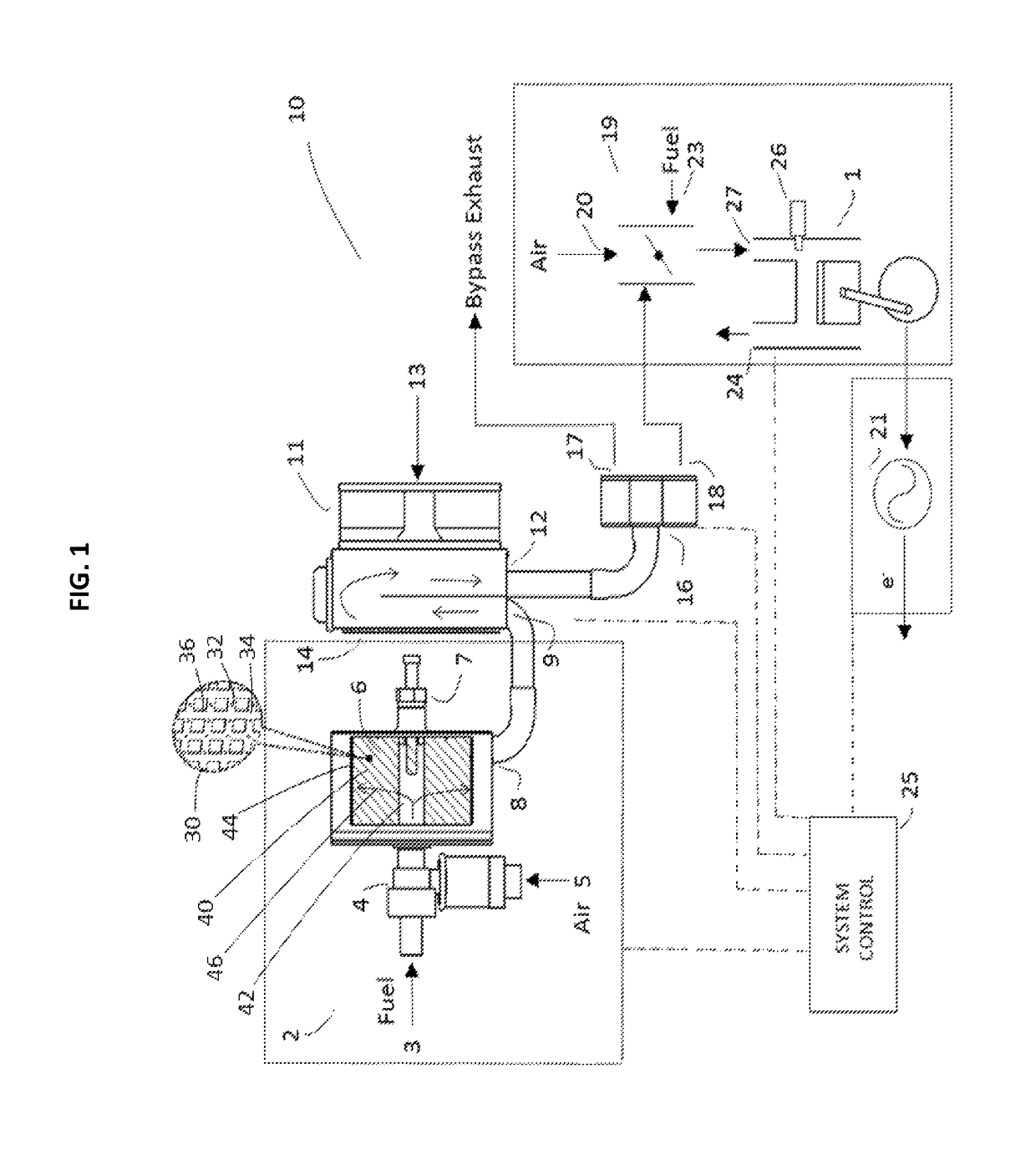Spark-ignited internal combustion engine modified for multi-fuel operation
a technology of internal combustion engine and spark ignition, which is applied in the direction of liquid fuel feeders, machines/engines, electric control, etc., can solve the problems of increasing the difficulty of supplying multiple fuel trains, reducing engine efficiency, and reducing the production of undesirable emissions. , the effect of reducing emissions
- Summary
- Abstract
- Description
- Claims
- Application Information
AI Technical Summary
Benefits of technology
Problems solved by technology
Method used
Image
Examples
embodiments
Example 1 (E-1)
[0120]A commercial generator (Honda Model No. EU1000i; 900 We output using gasoline; 50 cc displacement), configured with a spark-ignited, single piston internal combustion engine designed for operation on gasoline, was modified in accordance with this invention as illustrated in FIG. 1 so as to operate on a reformate derived from JP-8 fuel. A reformer module 2 was provided comprising a fuel inlet 3 consisting of an electromagnetic fuel injector for feeding a partially-atomized liquid distillate fuel to a mixing zone 4; an oxidizer inlet 5 for feeding an air supply from a forced air blower to the mixing zone 4; mixing zone 4 for thoroughly atomizing the liquid fuel and mixing it with the air; and a catalytic reforming zone 6 for receiving the mixture of liquid fuel and air from the mixer 4 and partially oxidizing the mixture to yield a syngas reformate (CO+H2). The catalytic reforming zone 6 comprised an ultra-short-channel-length substrate in the form of a coiled ret...
PUM
 Login to View More
Login to View More Abstract
Description
Claims
Application Information
 Login to View More
Login to View More - R&D
- Intellectual Property
- Life Sciences
- Materials
- Tech Scout
- Unparalleled Data Quality
- Higher Quality Content
- 60% Fewer Hallucinations
Browse by: Latest US Patents, China's latest patents, Technical Efficacy Thesaurus, Application Domain, Technology Topic, Popular Technical Reports.
© 2025 PatSnap. All rights reserved.Legal|Privacy policy|Modern Slavery Act Transparency Statement|Sitemap|About US| Contact US: help@patsnap.com


